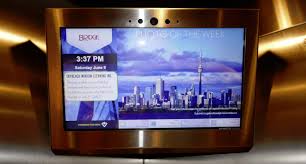 September 2022
September 2022
Lack of communication is a consistent complaint among those who reside in high-rise communities.
One of the challenges is complexity. Effective communication must incorporate technology. People rely on their electronic devices for virtually all communication and communities failing to adapt suffer.
Effective communication begins with a condo board identifying specific objectives intended to address concerns. One broad and encompassing objective may be to eliminate, to the greatest extent possible, paper communication. More specifically, an objective may be to enhance record keeping and improve efficiency. More specific objectives may be to minimize water leaks, improve energy efficiency or reduce frequency of fire alarms. In meeting specific objectives, it helps to establish targets that may include reducing water expenses by five percent or electricity consumption by 20 percent. Social-based targets can include increasing use of common areas or improved participation in community events. Establishing specific targets provide a way of measuring effectiveness and value of communication.
Achieving any objective or target requires effective content to ensure your message is noticed, read and retained. Good content is visually appealing. It utilizes simple messages, few words, effective headlines, colour and graphics. Keep messages positive and avoid negative or “do not” statements. Humour helps.
Finally, consider how your message, or content, is to be communicated. Most communities have multiple communication vehicles including notice boards in elevators and common areas, some level of electronic communication and newsletter. Not all are equal. Print notices distributed door-to-door are time-inefficient. E-mail notices are easily lost among other electronic communication. Condo management software, effective for resident-specific communication, and maintaining records of these communications, is less suited to changing how residents act.
Time is a consideration. Newsletters can be effective but require an inordinate amount of time to prepare content and design. Condominium management and boards rarely have the time or skills to maintain a quality newsletter.
When it comes to educating residents, encouraging them to act in a specific way, or informing them of important information, the elevator is one space where messages are most likely to be received and retained. Occupants will focus on a wall with engaging information which explains the effectiveness of electronic monitors. Yet, implementing them can be a complex undertaking. They require hardware, software, connectivity – internet access which excludes Wi-Fi signals which are unreliable between floors and when doors are closed – message creation and management. This exceptional tool becomes a major headache if not carefully considered.
Effective communication takes time and effort to deliver desirable results.







